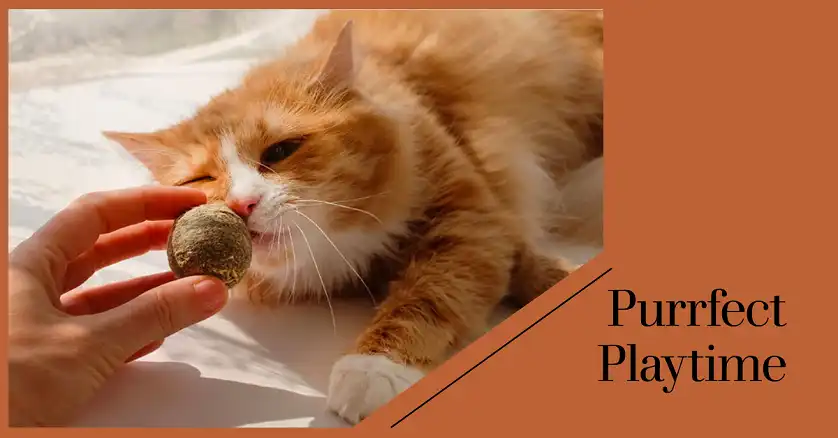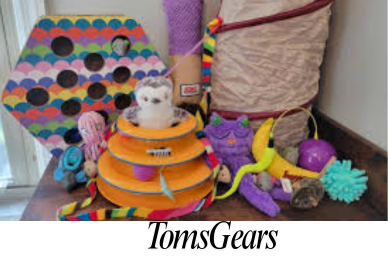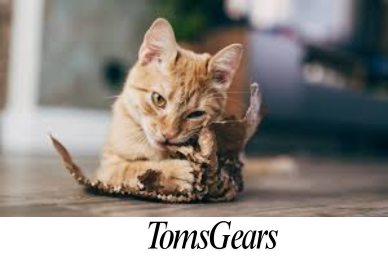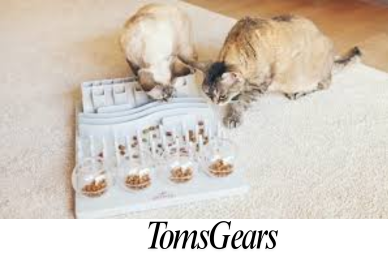How Long to Let Your Cat Play with Catnip Toys?
Have you ever watched your feline friend transform into a ball of pure joy at the mere sight of a catnip toy? It’s a sight to behold – your usually calm kitty suddenly rolling around, batting at invisible objects, and purring with unrestrained delight. This magical herb, known scientifically as Nepeta cataria, has captivated cats and their owners for centuries. But as responsible pet parents, we must ask: how long should we let this catnip-induced party last?

What’s Catnip and What Are Its Effects
Catnip, a member of the mint family, contains a compound called nepetalactone. This organic molecule is responsible for the euphoric effects we observe in our feline companions. When cats smell catnip, it triggers a response in their olfactory system, leading to a range of behaviors from increased playfulness to relaxation.
Interestingly, not all cats are affected by catnip. Sensitivity to this herb is hereditary, with approximately 50-70% of cats showing a response. The effects typically last for about 5-15 minutes, after which cats become temporarily immune to its allure for about an hour.
Recommended Duration for Catnip Play
While catnip is generally safe for cats, moderation is key. Most veterinarians and feline behaviorists recommend limiting catnip play sessions to 10-15 minutes at a time. This duration allows your cat to enjoy the stimulating effects of catnip without risking overstimulation or decreased sensitivity.
Several factors can influence how long your cat should play with catnip toys:
- Individual sensitivity: Some cats are more affected by catnip than others. Observe your cat’s reaction and adjust playtime accordingly.
- Age and health: Kittens under six months old and senior cats may have shorter attention spans or be more sensitive to catnip’s effects.
- Type of catnip toy: Fresh catnip or high-quality catnip toys may have stronger effects than older or lower-quality options.
Signs It’s Time to End the Play Session
Knowing when to call it quits is crucial for your cat’s wellbeing. Look out for these signs that indicate it’s time to put the catnip toy away:
- Overstimulation: If your cat becomes excessively agitated, starts hissing, or shows signs of aggression, it’s time to end the session.
- Loss of interest: When your cat stops engaging with the toy and walks away, they’ve likely had enough.
- Excessive drooling or panting: While some drooling is normal, excessive salivation or heavy breathing can be signs of overstimulation.
How Often Should You Allow Catnip Play Sessions
To maintain catnip’s effectiveness and prevent tolerance buildup, limit exposure to 1-2 times per week. This approach ensures that each catnip session remains a special treat for your feline friend.
Catnip Safety Considerations
Ensuring safe catnip play involves more than just timing. Keep these points in mind:
- Always supervise catnip play sessions.
- Choose catnip toys made from safe, durable materials.
- Store catnip and catnip toys in airtight containers when not in use to maintain potency and prevent accidental ingestion.
Why You Should Control Your Cat’s Catnip Play
When used responsibly, catnip can offer several benefits for your cat. For example, it can offer great mental stimulation and physical exercise. This can lead to stress relief. However, overuse of catnip can lead to some complications as well.
For starters, it will lead to tolerance buildup over time. It can also introduce some digestive issues in your cat if it ingests a large amount. Furthermore, you may notice some unwanted behavior change in your cat, including potential aggression in some cats. Therefore, it’s always advised to limit your cat’s catnip play time.
Frequently Asked Questions About Catnip Play
How long does catnip take to kick in?
Catnip typically takes effect almost immediately when cats smell it. You’ll usually see a reaction within seconds to a minute of exposure. The effects can last anywhere from 5 to 15 minutes for most cats.
How can I tell if catnip is working?
Signs that catnip is affecting your cat include increased playfulness and activity, rolling or rubbing against the catnip toy, purring or vocalizing more than usual, drooling, etc. If you don’t see these behaviors, your cat might be part of the 30-50% of cats that don’t respond to catnip.
At what age do cats start to enjoy catnip?
Most cats don’t respond to catnip until they’re about 3-6 months old. This sensitivity is hereditary, so some cats may never react to catnip regardless of age.
Does catnip make cats sleepy or hyper?
Catnip can have different effects on different cats. Initially, it often causes a burst of energy and playfulness. After this active phase, many cats experience a period of relaxation or sleepiness. Some cats may become more relaxed from the start.
Can humans eat catnip?
While catnip is not toxic to humans, it’s not commonly consumed. Some people use catnip tea for its mild sedative effects, but it doesn’t cause the same reaction in humans as it does in cats. Always consult with a healthcare professional before consuming any herb for medicinal purposes.
Are cats supposed to eat catnip or just smell it?
Cats can both smell and eat catnip safely. The effects are primarily triggered by smelling the herb, as the active compound (nepetalactone) binds to receptors in the cat’s nasal tissue. Some cats may eat small amounts of catnip, which is generally safe but can cause mild digestive upset if consumed in large quantities.
Can I wash my cat’s catnip toys?
Yes, you can wash catnip toys, but be aware that washing may reduce the potency of the catnip. Use mild, unscented detergent and air dry the toy completely. After washing, you might need to “reactivate” the toy by crushing it slightly to release more of the catnip’s oils.
Wrapping Up
Catnip can be a wonderful addition to your cat’s enrichment routine when used responsibly. By following these guidelines and observing your cat’s individual response, you can ensure that catnip play remains a safe and enjoyable experience for your feline companion. Remember, every cat is unique, so what works for one may not work for another. If you have any concerns about your cat’s reaction to catnip, don’t hesitate to consult with your veterinarian.
Key Takeaways:
- Limit catnip play sessions to 10-15 minutes.
- Offer catnip toys 1-2 times per week to prevent tolerance.
- Always supervise catnip play and store toys safely when not in use.
- Consult a vet if you have concerns about your cat’s reaction to catnip.
By following these guidelines, you can make catnip play a fun, safe, and enriching part of your cat’s life.






